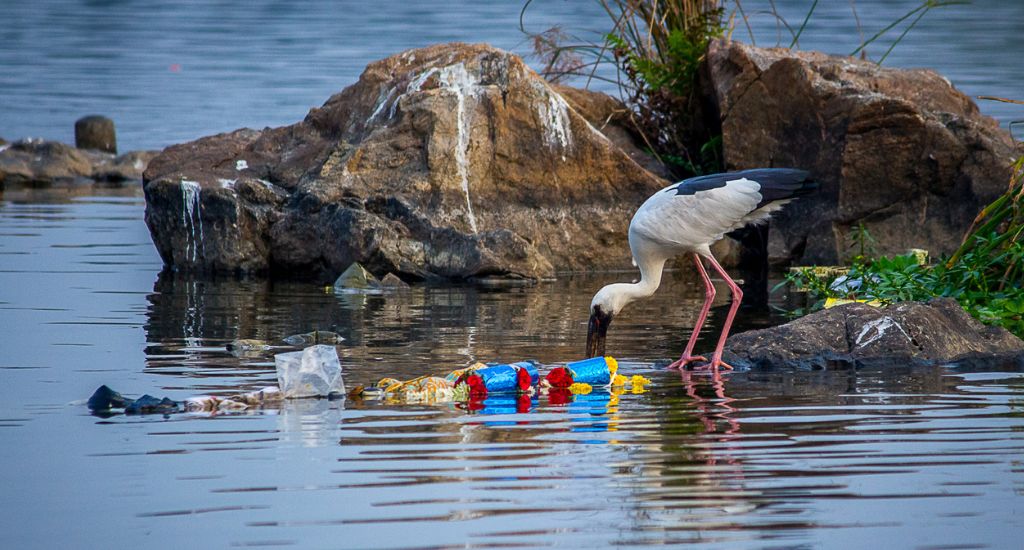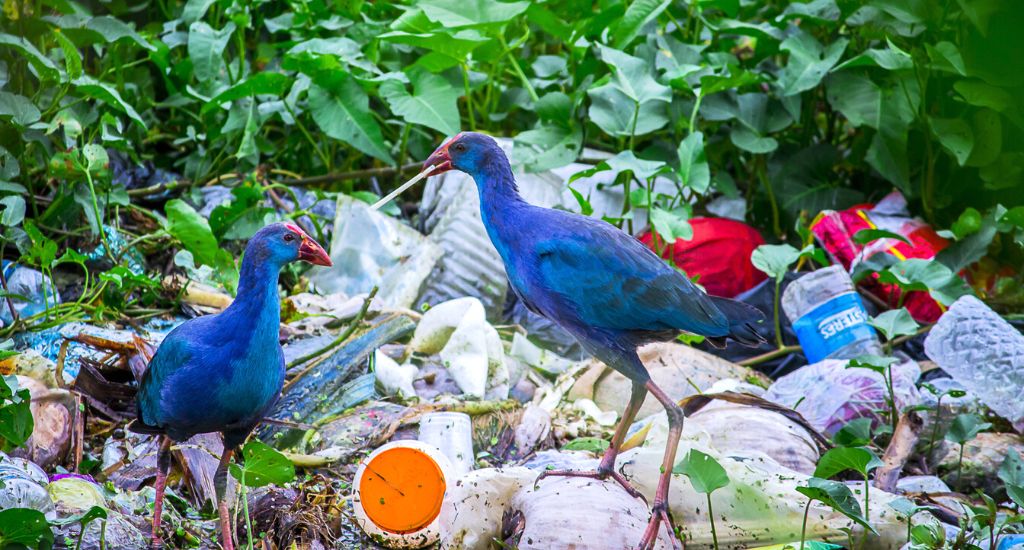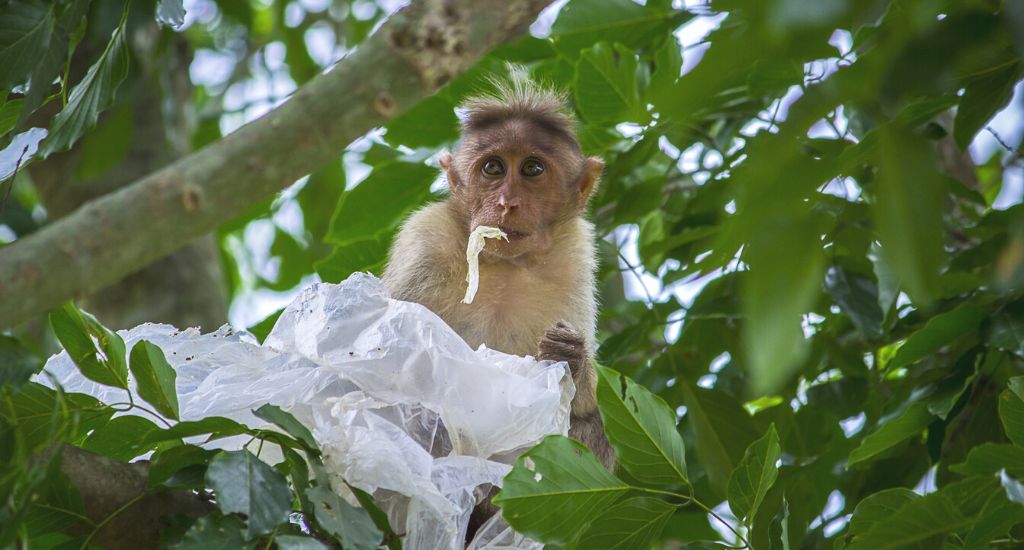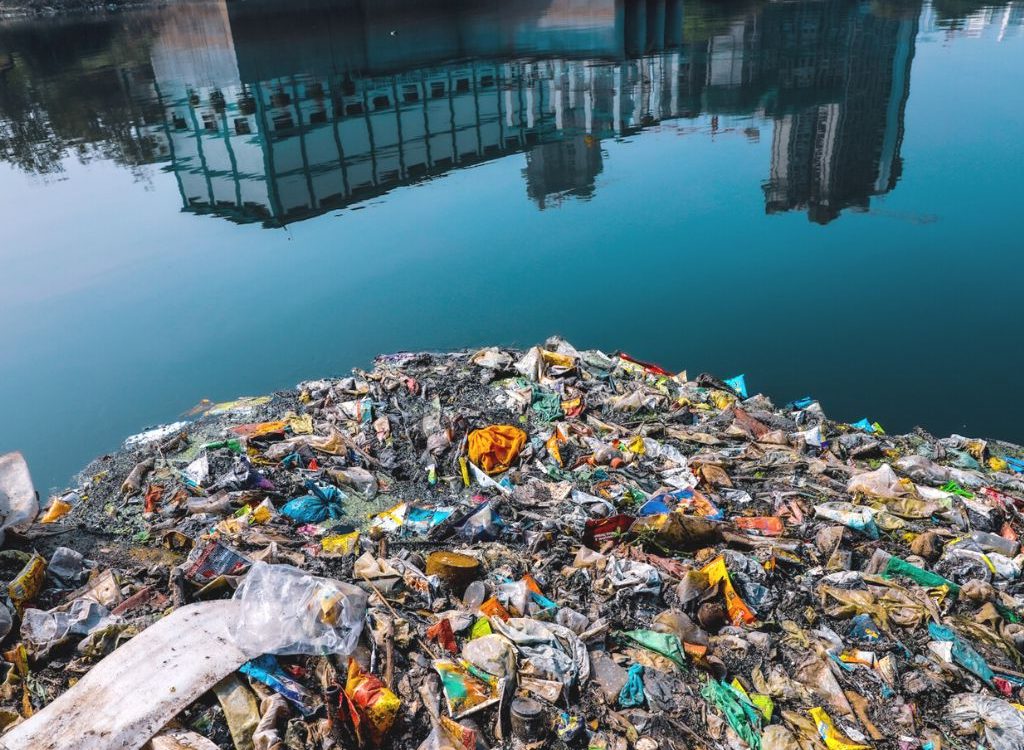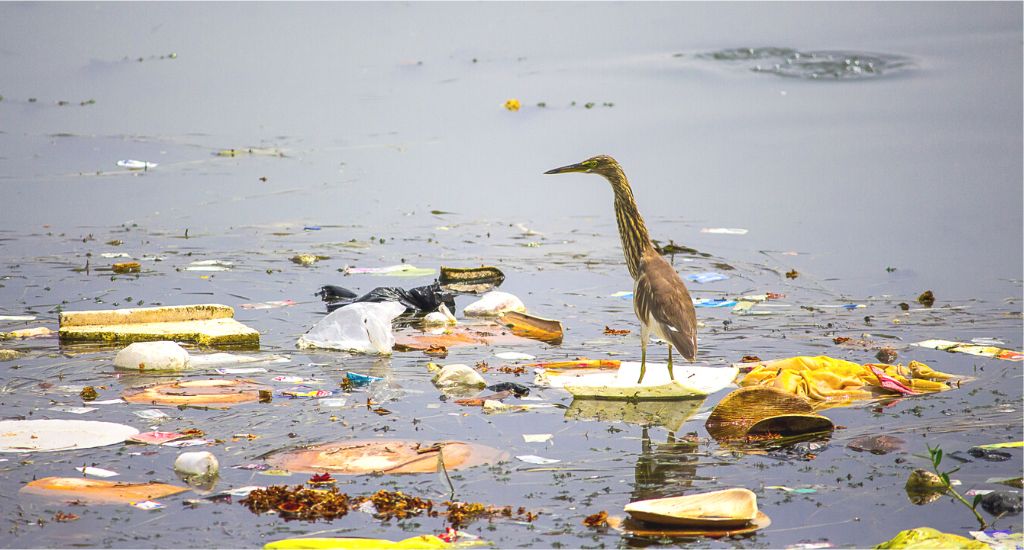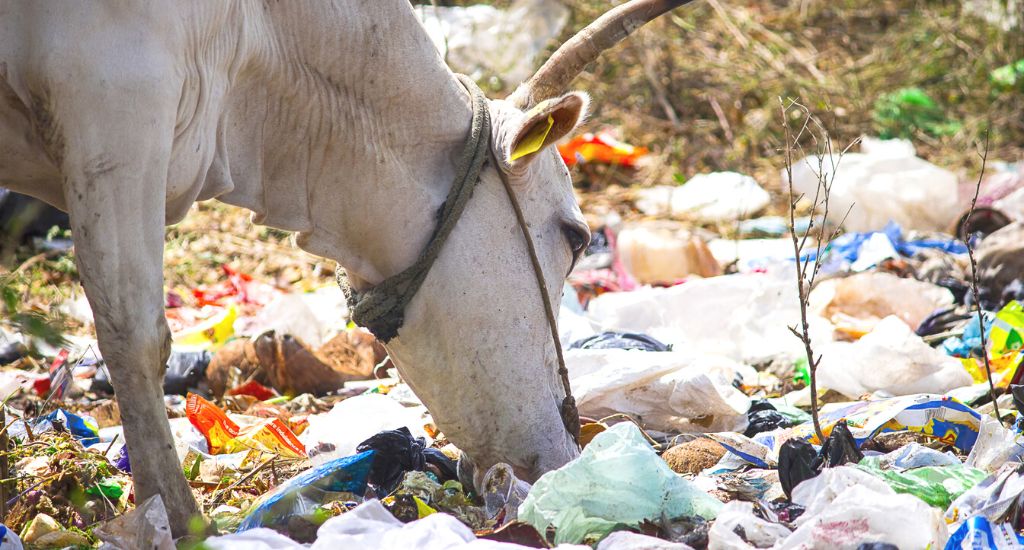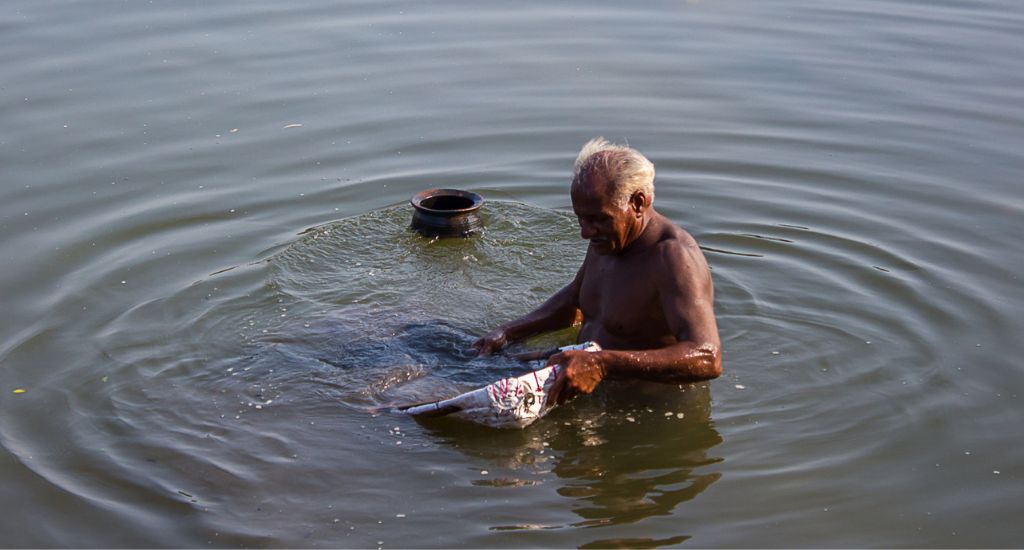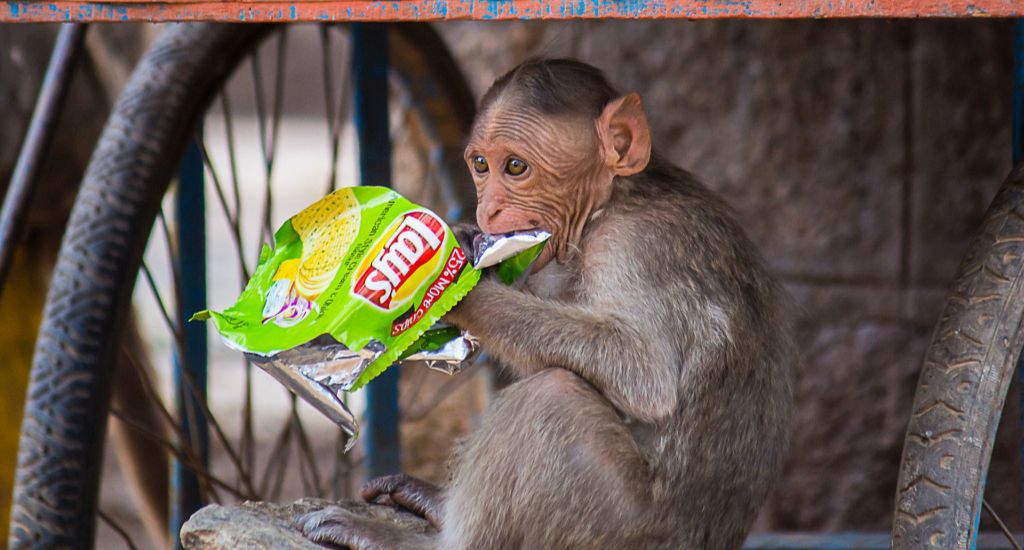
A peek into rural India’s plastic waste
Government of India’s strict ban on the use of ‘single-use plastic’ comes into effect on 1 July, 2022. The notification permits jail term of up to five years, or a penalty of up to Rs 1 lakh, or both, for violators. As this ban is imposed, we asked our growing photo community to show us how plastic waste affects rural India. The photos show the prevalence of plastic waste and the toxic ways in which it affects everyone - humans and animals alike - in the rural ecosystem.
An openbill stork forages in the polluted water of Triveni Sangam – the holy confluence of the Cauvery. India’s three rivers – Indus, Brahmaputra, and Ganga – are among the world’s top 10 plastic waste carrying rivers (Photo by Pavan Prasad)
A pair of Gray-headed Swamphen feeding on plastic debris in Periyapatna. A UN report suggests that plastic pollution significantly increases the vulnerability of endangered bird species (Photo by Pavan Prasad)
A baby bonnet macaque feeds on plastic thrown by devotees. As per a 2021 report, the global carbon footprint of plastics is two billion gigatons of carbon dioxide (Photo by Pavan Prasad)
Pile of plastic – plastic waste dumped in water in Maharashtra. India stands second among the top 20 countries having a high proportion of riverine plastic emissions (Photo by Shivaji Shekappa Dhute)
A pond heron in Nanjangud, Karnataka perching on polluted water. According to Environmental Management and Police Research Institute (EMPR), nearly 70% of water bodies in Mysuru and Nanjangud areas are polluted (Photo by Pavan Prasad)
A cow eating garbage – a common sight across India. Plastic waste poses a significant health hazard for cows – around 1,000 cows die annually just in Lucknow from eating plastic (Photo by Pavan Prasad)
An old man cleans up plastic waste from polluted water at Triveni sangama in Mandya, Karnataka. India generates 3.5 million tonnes of plastic waste every year (Photo by Pavan Prasad)
